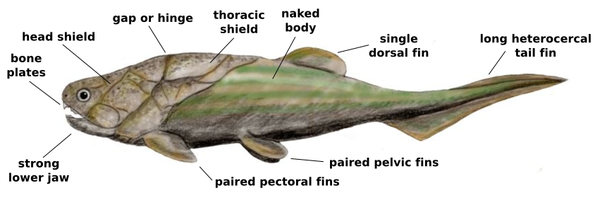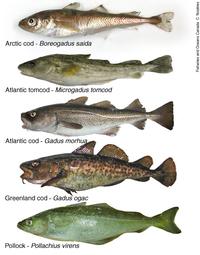Fish: Classification Study Guide
Introduction:
- Fishes are cold-blooded creatures with streamlined bodies.
- The majority of the fish are spindle-shaped and have fins to assist them in swimming.
- There are about 34,000 species of fish and these are classified as follows:
Class Placodermi
- According to fossil evidence, these are extinct creatures that lived throughout the Palaeozoic era’s Silurian, Devonian, and Carboniferous eras.
- Jaws were primitive because the endoskeleton and exoskeleton were formed of bone armor.
Hagfish:
- Hagfish are prehistoric vertebrates with a cartilagenous skeleton and no jaws or bones.
- They are also known as slime eels or slime hags, as they secrete copious amounts of mucus from many pairs of slime glands.
- They lack scales and fins and keep their notochord throughout their lives rather than forming a backbone.
- Hagfishes are predators on small invertebrates as well as scavengers feeding on dead or crippled fish.
Lampreys:
- Lampreys, like hagfish, lack scales and a jaw but have fins and a partial backbone.
- They live in coastal and fresh waters.
- Lampreys are distinguished by a huge spherical sucker that surrounds the mouth provided with horny teeth.
- Lampreys feed on the blood and tissues of other fish species via their sucker.
- Sea lampreys invaded the Great Lakes of America and due to their parasitic nature came to be recognized as a destructive invasive species on the local fish population.
Class Chondrichthyes or Cartilaginous Fish:
-
Consists of only marine animals such as sharks, rays, and ratfish.
-
Cartilage makes up the endoskeleton with a complete backbone.
-
The scales are placoid and are quite small.
-
There are no rays on the fins. Tail is heterocercal.
-
They have jaws that make them excellent predators.
-
They also have a relatively large brain and keen senses.
-
The ventral side has paired nostrils.
-
There is no air bladder. This is replaced by a pair of muscular fins.
-
Five to seven pairs of Gills.
-
The heart contains the sinus venosus, auricle, ventricle, and conus arteriosus, valves.
-
These animals are ureotelic, meaning they have a lot of urea and trimethylamine oxide (TMO) in their blood and bodily fluids.
-
Males have a pair of claspers on either side of the cloaca.
-
Eggs contain many yolks.
-
Fertilization is internal, and many are viviparous.
-
In oviparous forms, development occurs outside the body, while in oviduct forms, development occurs inside the oviduct.
Osteichthyes or Bony Fish:
- Bones make up the endoskeleton, and they can be found in both freshwater and marine environments.
- Scales called cycloid, ctenoid, or ganoid cover the skin.
- The mouth is generally either terminal or sub-terminal in shape.
- On either side of the pharynx, there are four pairs of gills. Operculum or gill cover covers their apertures.
- Tail have a homocercal, diphycercal, or heterocercal shape
- There are no claspers, cloaca, or Naso buccal grooves. There are separate oval and urinogenital apertures. The heart has two chambers, one for the auricle and the ventricle, and the conus arteriosus is not present. Lung fishes have a ventricle and an incompletely split auricle, and lungfishes have a pulmonary artery and pulmonary vein.
- These creatures are ammoniotelic.
- Many species have an air bladder.
- Most bony fish are oviparous. Only a few people are viviparous (Gambusia, Labestis, etc.)
Class Osteichthyes is further divided into 2 superclasses:
- Lobe — finned fishes
- Ray-finned fishes
A. Lobe – finned fish:
- Lobe-finned fish are significantly less common than ray-finned fish at the moment. Their fins have a stump-like bone and muscular appendage. Coelacanths and lungfish are the two types of lobe-finned fish that are still alive today.
i. Coelacanths
- Most are extinct fish with just two species left.
- Because of their dwindling numbers, they are on the verge of extinction.
- They average 5 feet in length and weigh about 100 pounds and have been known to live for 100 years.
- They feed primarily on cephalopods (cuttlefish, squid, and octopus) and fishes.
ii. Lungfish
- They are air-breathing fishes
- They have either one or two primitive lungs that allow them to breathe air.
- The organ is a swimming bladder adaption. Many honeycomb-like cavities (air vesicles) supplied with fine blood vessels are the site for gas exchange.
- Lungfishes eat a variety of aquatic animals, including members of their own species.
B. Ray-finned Fishes:
- The majority of live fish species have ray-finned fins, including goldfish, tuna, salmon, perch, and cod.
- They have a swim bladder and a skeletal endoskeleton.
- Their slender fins are made up of skin webs that cover flexible bone rays or spines. Because the fins lack muscle, the body wall muscles govern their motions.
Conclusion:
There are three classes in the superclass Pisces.
- Placodermi.
- Chondrichthyes.
- Osteichthyes. Cartilage makes up the endoskeleton in Chondrichthyes Bones make up the endoskeleton in Osteichthyes
FAQs:
1. What are the 5 classifications of fish?
Hagfish, lampreys, cartilaginous fish, ray-finned fish, and lobe-finned fish are the 5 common classes of fish.
2. What are the 7 levels of classification for a fish?
The 7 levels are kingdom, phylum, class, order, family, genus, and species, where the kingdom is the largest and most general. In contrast, species is the smallest category with the most common traits.
3. How are fish species classified?
Superclass Agnatha (jawless fishes), Class Chondrichthyes (cartilaginous fishes), and Superclass Osteichthyes (bony fishes) are the three groupings of fish (bony fishes). The Infraphylum Gnathostomata includes all jawed vertebrates and the last two families.
4. What class is an angelfish?
Angelfish belong to the class of Ray-finned fishes.
5. Why do fish have 2 colorations?
Three color pigments, predominantly housed within chromatophores cells, are responsible for a fish’s coloration. The fish has a matt white color if the iridocytes are in the lower layers of the skin. Iridocytes can mix with chromatophores to generate reflecting colors in some instances.
6. What is the domain of fish?
Because it has membrane-bound organelles and, most crucially, a nucleus, it belongs to the Eukarya domain.
7. What is class Pisces?
Pisces, a vertebrate class that includes real fishes, have jaws supported by a skeleton evolved from rudimentary gill arches. Pectoral and pelvic fins are often paired with dorsal, caudal, and anal fins in the midline.
We hope you enjoyed studying this lesson and learned something cool about Fish Classification! Join our Discord community to get any questions you may have answered and to engage with other students just like you! Don’t forget to download our App to experience our fun, VR classrooms – we promise, it makes studying much more fun!😎
Sources:
- Fish Classification https://flexbooks.ck12.org/cbook/ck-12-biology-flexbook-2.0/section/12.8/primary/lesson/fish-classification-bio/ Accessed on 6 Dec 2021
- fish https://www.britannica.com/animal/fish Accessed on 6 Dec 2021
- Fish Classification https://www.earthlife.net/fish/classification-2.html Accessed on 6 Dec 2021
- Fish Classification https://bio.libretexts.org/Bookshelves/Introductory_and_General_Biology/Book%3A_Introductory_Biology_(CK-12)/12%3A_Vertebrates/12.10%3A_Fish_Classification Accessed on 6 Dec 2021



